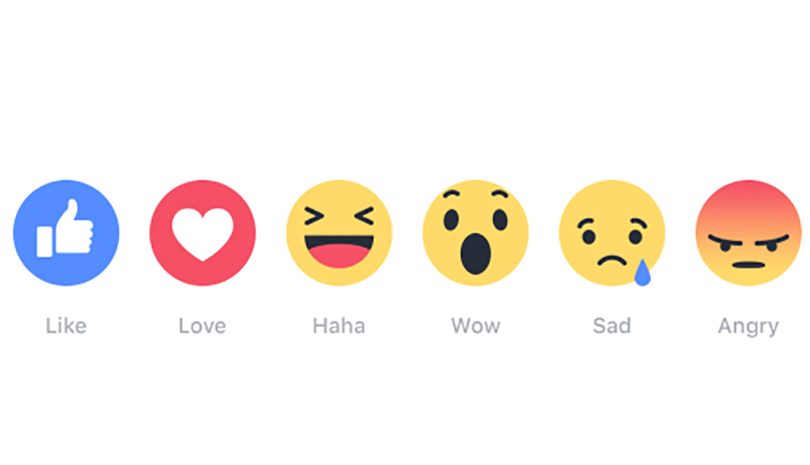How brands shouldn’t react to Facebook’s reactions

Okay, so it’s been over two weeks since Facebook reactions hit our newsfeeds and there is still little information about their impact and how brands can make use of this new consumer reaction.
Last year the media went into a frenzy, celebrating that Facebook was finally going to add a ‘dislike’ button. I wrote a prediction that this kind of thing might happen but I never once thought, “oh yep… great, bring on the ‘dislike’ button.” It was clear to me it was far more complicated than that and this new roll out has proven that. Consumers still aren’t fully comfortable with it and brands don’t know what the hell it will mean to their strategy.
Since the buttons were released we have analysed 200+ Facebook posts and over 80 per cent of people are still reacting/engaging with the legacy ‘like’ button.
The word on the street among some articles I’ve read, is for advertisers to panic about the negative reactions, keep an eye on those reactions and manage it through posting “better” or “different” content. I don’t know about you, but I personally think this is just a little counter intuitive. Just think, what if your post, video or image is about a particularly sad event or something that sparks a feeling of anger. Isn’t a reaction ideally what you want? A reaction to your post?
An ‘angry’ or ‘sad’ reaction doesn’t necessarily mean your audience is sad or angry at you or your brand now does it? Unless of course you’ve handled a customer service enquiry horribly, then they really have every right to be angry or sad at your brand.
To fully understand how reactions may impact your strategy you first need to understand one simple thing about Facebook’s newsfeed algorithm… It supports engagement and will continue too. There isn’t any evidence yet that ‘sad’ or ‘angry’ type of reaction is bad thing. I think for the long term, Facebook is going to continue looking for engagement on brands’ posts to gauge the relevancy and not judge it on the “reaction” but rather stick with current rule of low engagement versus the user hiding of content.
In saying that, there are some things Facebook are doing to support newsfeed experience. You might have noticed that Facebook is also now asking us (consumers) if we are still keen on an interest group. i.e. Email Marketing or Media before serving the first ad in the newsfeed? This question before serving an ad is obviously to support more relevant ads in newsfeeds. This again, isn’t a bad thing. If you’re focused on great content and exceptional targeting, or even better, triggering your ads based on behaviour, then you’re going to be on a winner.
So for now… Don’t react to the reactions. If you’re taking time to understand what your post is trying to achieve before sending it live then you’re in a good space. These reactions aren’t going to do anything but register an engagement and the engagement type. If you see your following decline after a post, that’s what you should be concerned about. It’s early days in the world of Facebook reactions so watch this space. I’ll report back when we get some more insight.
Alita Harvey-Rodriguez is a leading Australian Digital Marketing Futurist and the brains behind Milk it Academy.
Comment Manually
You must be logged in to post a comment.


No comments